Orchid "Legato": description and care
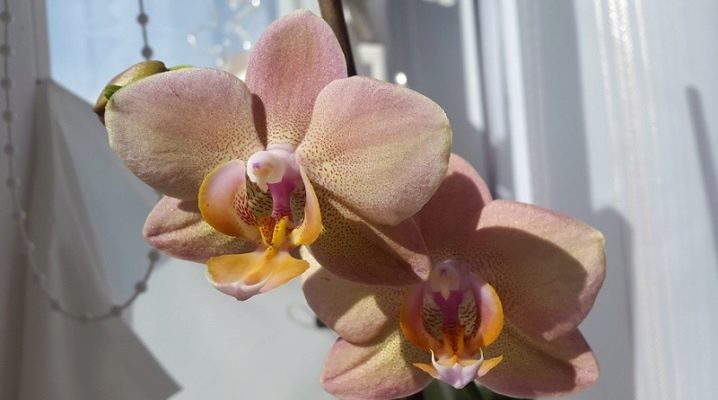
Orchid "Legato" is one of the varieties of Phalaenopsis. The literal translation of the name "Butterfly" orchid, and she received it from one of the Dutch botanists. The peculiarities of the orchid are that it has green roots, this is influenced by participation in photosynthesis.
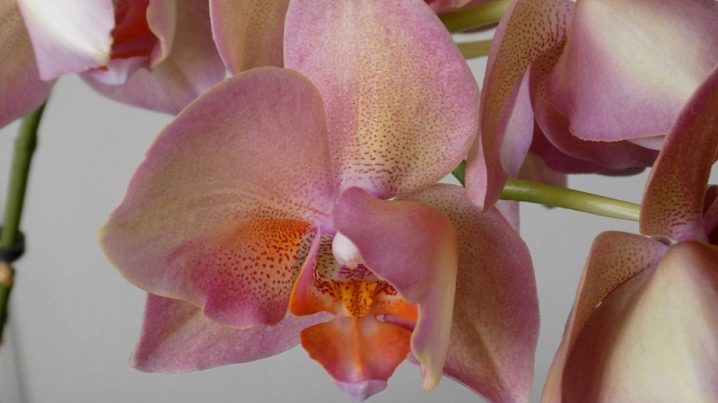
Peculiarities
According to the description, the Legato orchid is just a hybrid of a flower. Therefore, the cost of plants is much less than varieties. However, this does not affect the appearance of the flower. Its color is very unusual, in the range of possible color solutions there are such shades as golden, lilac, pale pink. The beige surface of the flower creates a mother-of-pearl effect, so all colors look delicate.
The flowers themselves are quite large, up to 7 centimeters in size. An adult orchid is capable of reaching 70 centimeters in length. The covering tissue of the petal is silky. Like many plants, Phalaenopsis loves fresh air, but nevertheless it is very important for him that there is no draft in the room. Most species feel comfortable in the daytime from + 22 ° C to + 30 ° C, the temperature at night should not be lower than 16 ° C.
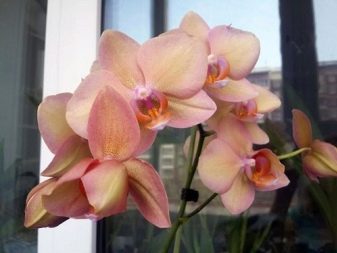
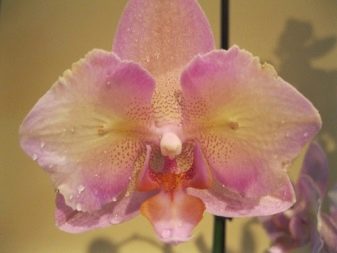
How to care?
Each flower has its own characteristics that allow it to adapt to its specific habitat. The Legato orchid is no exception.
The maintenance of an orchid includes a number of conditions.
- Overheating or a draft can be extremely dangerous for a plant: a very low temperature contributes to unplanned flowering, a high temperature contributes to the appearance of children on the peduncle.
- This plant variety is very photophilous, therefore, the use of artificial light is allowed even at night, but the orchid should not be placed in direct natural rays of the sun, as they can harm its delicate integumentary tissues. If the temperature reaches + 35 ° C, the plant must be rearranged to another place, thereby hiding it from the sun's rays. After that, rhizomes and leaves should be doused with water at room temperature from a spray bottle.
- Lighting in winter for phalaenopsis should be maintained for at least 12 hours a day. If this does not happen, the growth and flowering of the orchid slows down. From late November to early March, artificial lighting is most often used. When this is not possible, the orchid simply goes into hibernation. Its vital functions are slowed down, but the flower does not die. In this case, active development will take place in the summer or spring.
- To ensure that the plant is able to bloom, it is necessary to locate the pot and keep it in a calm position. And also in the room where the flower is located, you need to maintain a stable temperature, provide a fairly bright light in the same room and carefully check the air, keeping it relatively humid.
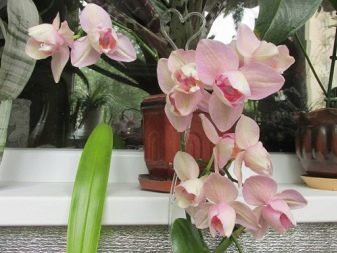
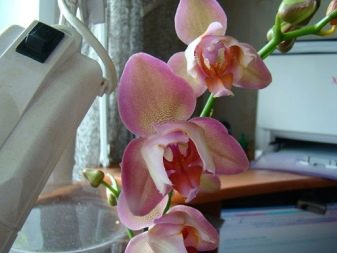
Watering rules
Watering phalaenopsis is necessary with boiled water that has passed through filters. Watering method - immersion of rhizomes in water. It is necessary to perform this process for a rather long time, but rarely: in the summer, once every 4 days, and in the winter - once a week.
In order to prevent leaf decay, care must be taken to ensure that no water enters the point of the center of leaf growth.
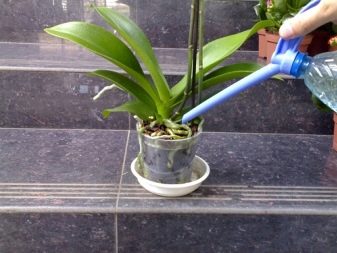
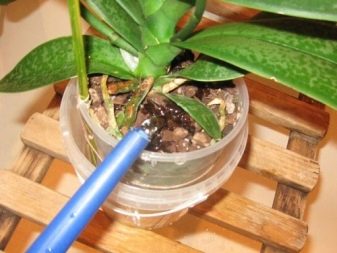
How and with what to fertilize?
As for the additional nutrition of the plant, experts recommend choosing mineral fertilizers, which are determined by a special level of acidity. An orchid requires a much smaller amount of trace elements in comparison with ordinary houseplants.When choosing a fertilizer for a home plant, it is best to give preference to liquid mineral fertilizers, which do not require mixing and measuring proportions.
If the plant is not damaged in any way, it is best to fertilize through the roots.
In case of problems with the rhizome, it is recommended to carry out the fertilization process through spraying.
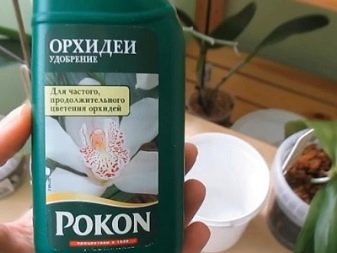
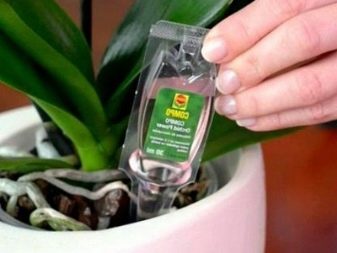
Diseases and pests
The biggest problem with orchids is rot. If the rules of care are not followed and the watering is too generous, rotting of the sheets is possible. And they are also susceptible to fungal infections.
If we talk about pests, then mealy and citrus bugs are considered more popular among orchids. Therefore, the plants must be periodically inspected. You can destroy those parasites that you find by wiping phalaenopsis with a solution of soap.
And also to combat insect pests, spraying with a fungicide helps.
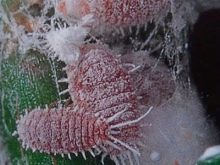


Nuances of choice
Florists recommend buying orchids during their flowering period. Blooming flowers attract potential buyers with their appearance. Due to the special shape of the flower, customers do not pay attention to defects that would be worth checking. To get a healthy, strong flower for a long time, there is a lot to test.
- Plant roots must be firmly attached to the substrate. After chatting it in the planting container, there should be no signs of the plant deviating from its direction.
- Phalaenopsis leaves should have volume, impressive veins and strong integumentary tissue. The presence of gloss on the leaves is an indicator of the health of the plant. And also it should not have dried ends, look flaccid.
- On phalaenopsis flowers there should be no signs of rotting, bright color and reliable fixation of the inflorescence on the stalk is encouraged.
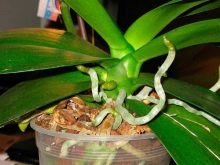
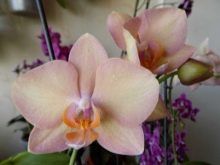
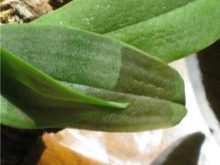
Reproduction at home
There are four ways to reproduce this type of orchid. An adult plant is very demanding of itself, and the sprouts and rudiments are even more so.
- Seed propagation takes practice and stamina. For a favorable reproduction of sprouts, it is necessary to create special greenhouse conditions.
- At the end of flowering, a rudiment appears on the peduncle, which has an aerial root. To grow a healthy plant from it, it is necessary to place this process in a familiar substrate, and also observe the above conditions.
- A risky way to grow a flower is through cuttings. With this method, it is impossible to be sure of success. Nevertheless, for reproduction by this method, it is necessary to germinate cuttings of phalaenopsis in an environment with high humidity.
- Raising children is not a quick process. The first step is to find babies on the inflorescence, then create a temperature in the room that does not exceed + 29 ° C. Carefully open the bud on the flower (it is not recommended to open more than one, this may die). The kidney must be freed from the "covering" tissues. After the kidney is covered with a small piece of sphagnum. Only after 3-4 months the first roots appear in the kidney. When the length of the roots reaches a couple of centimeters, you can safely cut the bud together with the mother branch, and then place it in the substrate.
Until the plant has reached its normal size, it is necessary to carefully monitor the moisture content of the rhizome.
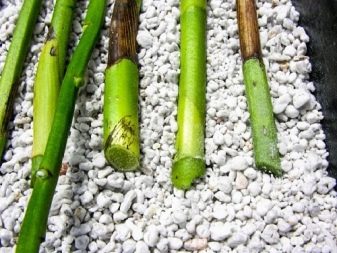
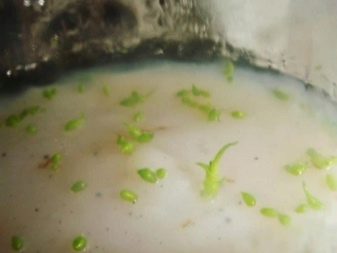
Thanks to proper care of the flower, the lucky owner can get long flowering for up to six months. The orchid is capable of "giving" up to a hundred inflorescences, which is a big plus: the aesthetic appearance of the plant pleases the eye.
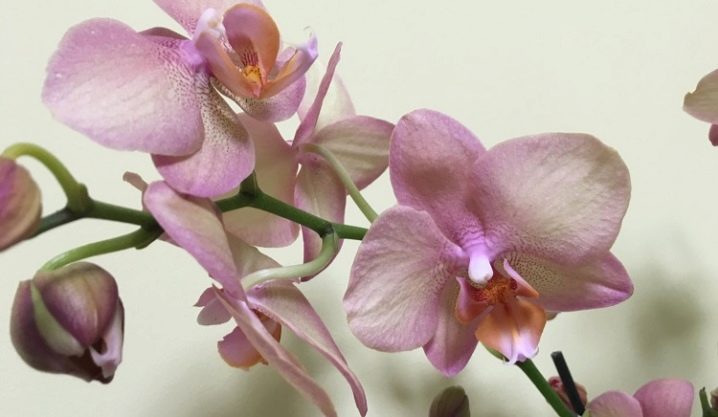
See below for more details.































The comment was sent successfully.